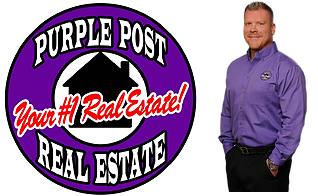By Megan Poinski, Megan@MarylandReporter.com
This was National School Choice Week in America, marked by over 400 events around the country to celebrate public charter schools. But there was only one small event announced in Maryland, a dinner discussion set for next week in Baltimore, and no recognition of the week at the State House.
Public charter schools are increasing as an alternative educational option throughout the nation. But advocates say Maryland’s laws and the scrutiny given to new charter applicants are slowing progress toward more school choice.
Maryland’s charter school law was passed in 2003, one of the last states in the nation to allow charter schools. Right now, the state has 51 charter schools, with a 52nd starting classes in the fall. All but 14 of these schools are in Baltimore.
Charter schools are publicly funded non-religious schools that are organized differently than a traditional public school. While boards of education set the standards and curriculum for public schools belonging to a school district, charter schools set out the way they are organized – as well as educational philosophies and curriculum – in a charter document.
These schools receive public funds and have to comply with numerous state standards, like students achieving a certain level of test scores and meeting mandatory attendance goals. But they are more self-directed, more community-oriented, and tend to utilize different methods for teaching and learning.
“Charter schools are aligning decision making authority with the resources in the school,” said David Borinsky, chairman of the Maryland Charter School Network.
But the law governing charter schools in Maryland hinders the development of new schools, many advocates say. Maryland’s charter school law recently received a D on a national report card put together by the Center for Education Reform. Alison Consoletti, the organization’s vice president of research, said that Maryland has the nation’s seventh-weakest charter school law. Since the law was first established, Consoletti said that Maryland has been in the bottom third when it comes to charter school law.
“Generally, if you look across all of the major categories (included in the report card), you will see pieces that Maryland is missing to have high quality charters or a high number of charters,” she said. “It is lacking in a high number of categories.”
Open admissions and public funding
Borinsky’s group is a statewide network of professionals and supporters of charter schools. They both provide information about charter schools to those who seek it, support groups who are trying to start charter schools, and lobby state and local governments on behalf of charter schools.
Charter schools are open to anyone and get their funding from state and local governments. They are not allowed to have any admission requirements, and many are filled with students from the local area. Other slots in the school are filled by lotteries.
Because of the flexibility a charter school can have, they tend to have different types of teaching philosophies. Some charter schools are Montessori schools, emphasizing hands-on and visual learning. Some charter schools are part of the Knowledge Is Power Program — commonly abbreviated as KIPP – which puts an emphasis on learning and student achievement. Some charter schools focus on science, technology, education and math (STEM). Some have foreign language immersion programs.
Borinsky said that because of the way they are structured and run, charter schools are much closer to the community where they are located. They have more partnerships, and they engage everyone in a different way.
“Charter schools are so open-source,” he said, drawing an analogy to community-programmed software applications. “They are more open to volunteers and collaboration. People get invested in their charter schools, and they are great at getting parents to be more involved.”
Consoletti said that because of the unique ways that charter schools are run and how they teach students, they often make a positive difference in urban school districts.
Giving options to children
Del. Sandy Rosenberg, a Baltimore Democrat who has backed legislation to improve charter schools in the General Assembly, agreed.
“It’s worthwhile to give kids these options,” Rosenberg said.
Borinsky said that some of the state’s best schools are charter schools. Rosemont Elementary/Middle School went from being one of Baltimore City’s worst to one of the best. It got to be that way through a partnership with Coppin State University and community engagement, Borinsky said.
The Baltimore Montessori Public Charter School, he said, is also a rousing success. The Montessori teaching style produces high achieving students. There are students from across the economic spectrum there – from the very poor to the quite well off. There’s a long waiting list, and both the parents and students are happy with the school.
“This is what everybody wants a charter school to be,” Borinsky said. “It hits the bull’s-eye.”
Bobbi Macdonald, executive director of the City Neighbors Foundations, which runs three Baltimore City charter schools, said that the quality education choices available today are amazing. City Neighbors’ schools use the arts, creativity, expression and community to engage students.
“We have created a vision of what public education in Baltimore can be, and it’s beautiful, joyful and powerful,” Macdonald said.
Monday: Opposition to charter schools


